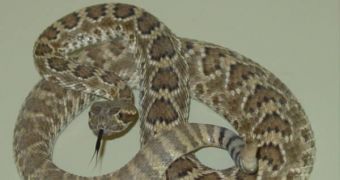How snakes can move across sandy or flat terrain, where there is nothing to push against for forward motion, has been a long-standing question for biologists, who have thus far believed that the animals move by propelling themselves against small rocks or branches. But a new mathematical model seems to show that they actually use their scales for locomotion, and that they rely on sideways friction as a source of their ability to move on flat terrain.
In the new research, experts from the Georgia Institute of Technology, in Atlanta, the US, noticed that the snakes' belly scales opposed the most resistance to moving if the animal wanted to go sideways, instead of backwards and forward. They also determined that, when moving, the creatures were very likely to lift the parts of their body that experienced the most drag off the ground, so as to minimize movement resistance. The science group was led by GIT Mechanical Engineer David Hu.
“No one had measured the sideways friction. That's the key to their motion,” the scientist explained, quoted by Nature News. Biologists have known for a long time that snakes seem to slide a lot faster when going forward than sideways, but have thus far never measured the intensities and physical properties of each kind of movement separately. Experts have believed that, when the snakes slither in an S-shaped pattern, their scales would catch on to small bumps in the ground, adding speed. But exactly how this mechanism works has never been fully explored.
After watching a number of snakes move throughout various types of surfaces, the researchers plugged those values into a mathematical model, but the speed they got from their virtual animals was lower than that appearing in real life. So they also inserted the snakes' tendencies to lift some parts of their body off the ground when moving, so as to minimize drag. Once that happened, their virtual snakes started moving 35 percent faster, more closely to the actual speed of the creatures. The research illustrated the importance of sideways friction in snake movement, the experts concluded.

 14 DAY TRIAL //
14 DAY TRIAL //